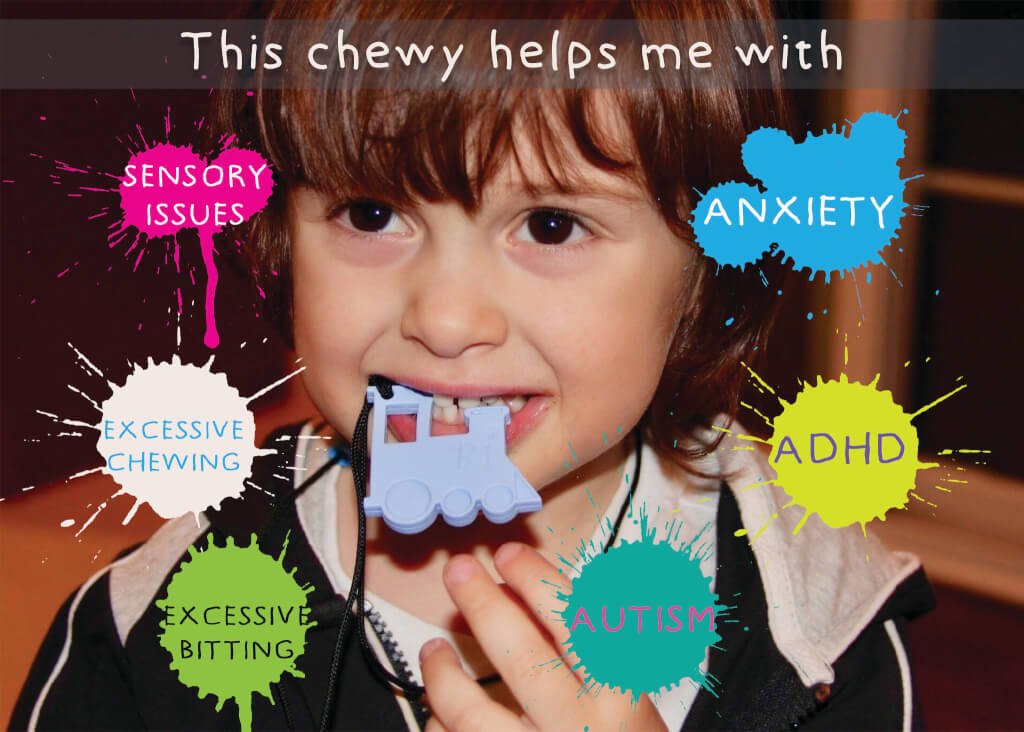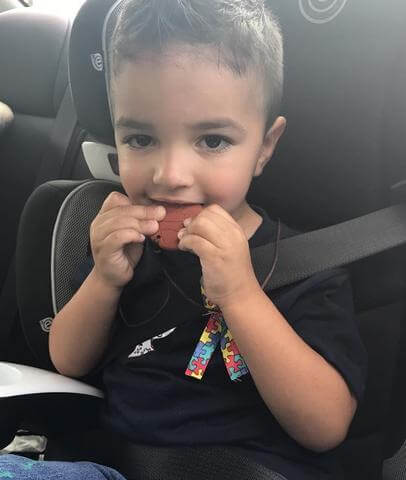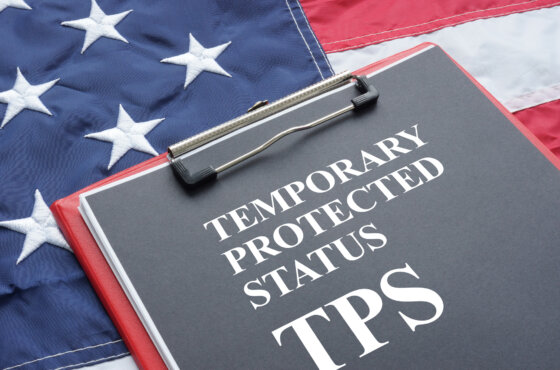Two friends create toys to help fighting autism

Chewy necklaces made in different colors. Photo courtesy of Bestie Toys.
Autism has reached epidemic levels in the United States. More than 2% of the future American generations have this condition. At the same time, autism in not yet deemed a disease, and most cases can be corrected with the help of attention, patience, and special therapy. ForumDaily looked into daily lives of kids with special needs in the United States and special toys they can use.
Autism outbreak
Oksana moved to New York from Minsk, Belarus, on a Fiancée Visa in 2013, and gave birth to son David one year into her marriage. The boy was born healthy and was developing without problems. Like any mother, Oksana wanted the best for her child and was keeping up with all doctors’ recommendations, including complete vaccination. After an MMR immunization that David received when he was 18 months old, he got fever and went into a seizure. Three months later, the boy was diagnosed with autism. He stopped talking, although he knew up to 20 words and used them extensively; he became more aggressive, lost his interest in his parents, and was shouting every time he was among other kids.
Doctors say there is no connection between the immunization and autism and assure Oksana that she could have missed her son’s peculiarities. The woman thinks differently. Oksana’s family is fighting for their son’s normal development.
“We are taking David to special classes. He eats only gluten-free and caseic-free food, which yields results as well. We buy him special games, approved for autists. I spend my time with the child only. It’s good that my husband earns a living. I started to see the progress just recently: David has become calmer, he started talking — mom, dad, and other simple words; he does not swirl around the room like he used to before. I really hope that eventually we will be able to take away those autism symptoms,” Oksana says.
Oksana says many of her friends from different families have faced the same problem.
The issue of autism is very acute in the United States. Statistics say that the number of kids who suffer from it is increasing exponentially every year. In 2000, only one child in 150 was diagnosed with autism, while in 2017 it is one in 68 children aged three to 17. This means that the number of kids with development issues has increased by more than 50 percent in 17 years.
Autism is deemed a disorder that occurs due to brain developmental disabilities. It has different manifestation in different children, but some symptoms are very common: the kids stop smiling, have poor reaction to their families, scream when they hear loud sounds, might act aggressively towards themselves and other people, and like repeating same activities or words during long time. As a rule, autism manifestations are developed and showing before the age of three. Boys are diagnosed with autism condition or symptoms several times more often than girls.
Scientists say that the reasons for growing autism statistics might include usage of pesticides in agriculture, eating food with GMO, and food additives. Some researches prove there is connection between immunization and autism development, but they are considered disputable.
At the same time, the U.S. Department of Health spends enormous amounts of money on therapy for kids with developmental needs. U.S. non-profit organization Autism Speaks has published a research in JAMA Pediatrics stating that living cost per one person suffering from an autism spectrum disorder reaches $2.4 million for the state.
Most of these expenses fall into the special education category and are not covered by insurance, i.e. fall on the shoulders of parents. For grownups with autism, the funds are spent mostly on care and loss of labor capacity.
So it happens that kids with autism spend most of their time within their homes and home cities where they receive therapy. Some simple infantine pastimes like visit to Disneyland are not for them.
This is the reason that made Gordon Hartman, a father of a girl with autism, build the first theme park for kids with special needs in the world (that also accepts regular children) in Texas in 2010. The attractions include a Ferris wheel, rides and swings, a playground, a tiny train, and much more. Over one million people from 50 states and 67 countries have visited the park in the past seven years. One third of them are people with disabilities and developmental needs. They can enter the facility for free. The project cost more than $50 million.
Special toys for autism kids
In the U.S., there is a federal program titled Early Steps, for kids with developmental issues under three years old, says Frances Levin, one of Bestie Toys founders. Parents spend on average some $30,000 on therapy for one kid with autism. But the society is used to help people with these special needs. Many support centers have been created to help adopt them into society. Moreover, Americans are very tolerant to autism patients’ behavior in public places, Levin says.
She knows of autism from inside. Together with her friend of more than 12 years Sophia Dvorkina, Levin had worked with kids who have autism spectrum disorders. The girls worked in kindergartens for about three years. Sophia was employed as an early development teacher and worked with special kids at home, face to face, helping them to develop social skills. In addition, the girl was teaching parents of children with autism disorders to communicate with their special kids. Frances also worked in kindergartens and was helping children to develop.
At some point the girls felt the need to create a product that would help children with autism fight their sensory processing disorder.
Kids with this kind of disorder, Sophia says, might get extra sensitive or insensitive. This kind of “reboots” their brain, and they start repeating same movements, act hyperactively, or chew on something not suitable for that, she adds.
To help kids cope with the problem, the two girls came up with an idea of chewable toys that are a safe alternative to inedible objects, biting other people, sucking on their thumbs, oral fixation, and sensory seeking. The company was launched in 2017 and named Bestie Toys. Bestie Toys is devoted to help kids, parents, therapists, schools, clinics and organizations that care for kids with special needs.
A Bestie toy is a necklace with a rubber toy made of 100-percent non-toxic food grade silicone. The toy is made in three styles and nine different colors. This useful device has been approved by FDA and dentists.
The toys are aimed at oral and tactile sensory needs and help the kids out when they start worrying and want to chew on clothes, pencils, fingers, etc., Frances says. Having the toy in his or her hand, the kid is able to focus on school work and lessons during class time, she adds.

Photo courtesy of Bestie Toys.
This is how Bestie Toys help the kids remember information during classes, control their behavior at home and in school, and manage their anxiety and stress.
When the two besties started producing and selling sensory tools for children, they decided they could give back to the community more efficiently if they donated some of the toys. For every sale, they donate a sensory necklace to a variety of charities that focus on sensory development.
“To give back to kids in need is an absolute honor and we hope to help thousands of children with our donations,” the two say.
Frances and Sophia are very proud to produce Bestie Toys in the United States.
“We are proud Americans and so is our company. Manufacturing in the U.S.A ensures safety of all materials used to create our products. As a company, we want to make sure we can give our customers products that don’t contain hazardous material and meet FDA guidelines,” Sophia says.
The two friends believe that one day they will change the world and make it more comfortable for kids with special developmental needs. The demand for the toys is high, but the biggest difficulty the girls face is that many people are still unaware of the challenges and difficulties that people with autism have on a daily basis.
Подписывайтесь на ForumDaily в Google NewsХотите больше важных и интересных новостей о жизни в США и иммиграции в Америку? — Поддержите нас донатом! А еще подписывайтесь на нашу страницу в Facebook. Выбирайте опцию «Приоритет в показе» — и читайте нас первыми. Кроме того, не забудьте оформить подписку на наш канал в Telegram и в Instagram— там много интересного. И присоединяйтесь к тысячам читателей ForumDaily New York — там вас ждет масса интересной и позитивной информации о жизни в мегаполисе.


















